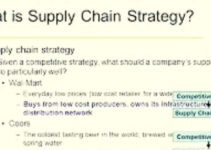In order to amplify the profitability and growth of the company, companies want control back over their demands and the pricing of the product. That’s where the role of demarketing comes into play. Today, we’ll discuss what is demarketing; its various types, strategies, benefits, and examples.
What is Demarketing?
Demarketing is a method when companies develop and launch strategies to decrease the utilization of the product. Often traditional marketing approaches motivate customers to buy more products and services; the focus of demarketing is to restrict the reach of the product. However, businesses and companies employ the concept of demarketing in various situations and circumstances to get control back over the demand, price, and usage. They implement these strategies for various reasons like increasing demands and converse resources.
Types of Demarketing
Some of the main types of demarketing are as follows;
General Demarketing
General demarketing is a form of strategic approach when a company reduces the utilization and consumption of goods for all customers. It allows them to save resources in periods of shortage of supplies. For instance, a laptop manufacturing company employs the demarketing strategy to restrict the sale of an older model, and it encourages customers to buy the latest model.
Selective Demarketing
It is a form of a strategic approach that focuses on decreasing the consumption and utilization of products among a particular group of customers. Companies employ this strategy to give access to other customers like their ideal and loyal customers. For instance, a company or store demarkets a particular product for the general public and makes it exclusive and a reward for some customers.
Ostensible Demarketing
It is a form of a strategic approach that comprises creating a shortage of the product in the market in order to amplify its demand among customers. When you limit the supply of particular products, it would amplify the demand among customers for the products that are difficult to find. However, it would help companies to increase the retail prices of the demanded products.
Strategies of Demarketing
Some of the main strategies of demarketing are as follows;
Crowding Cost Demarketing
It is a form of strategic approach when the customers expect a significant amount of discount on a particular day. For instance, the day could be Black Friday when a large number of customers rush towards the stores. The huge crowd would annoy some customers and some would pay higher prices to stay aware of the crowd.
Differentiation Marketing
Some companies discourage low-cost products and price-conscious customers, and they promote high-priced products. The other type of companies add accessories along with their products, and some restrict the availability of products in a particular market.
Stock Outage Demarketing
It is a strategic approach when the company artificially creates a shortage of products. When it happens, the company would promise to deliver the product on a particular future date. It would also make customers buy more products and services.
Price Discrimination Demarketing
It is a form of a strategic approach that focuses on discouraging customers to look for cheap and low-cost products. Some busy customers are willing to pay high prices, and others with the low transaction would pay lower prices.
Bait & Switch Demarketing
It is a form of strategic approach when companies market one particular type of product in such a way that they would start buying other types of products. It falls under the category of deception and it is not legal.
Benefits of Demarketing
Some of the main benefits of demarketing are as follows;
High Profitability
If a company is not making a profit from a particular product, then demarketing helps them to decrease the production rate and cut down the cost. The product wasn’t making a profit either because of high production or marketing. The strategic approach would allow companies to shift their focus on those products that are making a profit.
Saving Resources
If the company doesn’t have the access to the availability of resources for production, demarket approach helps them to decrease the demand for the product. It happens due to the recall, disruption in the supply chain, and shortage. However, when restricting particular types of products, the company would develop those products that are easy to produce.
Attracting Customers
Demarket strategic approach helps companies to save resources by selling only those products that customers are looking for. For instance, some luxury brands target only customers above 50 years old because they have the health and resources to enjoy the luxury lifestyle.
Market Control
It helps companies to control the demand for particular products in a particular location point. It is due to various reasons like challenging distribution channels and high marketing costs. However, this approach helps companies to sell particular products to their ideal customers.
Examples of Demarketing
Real Estate High Cost
The professionals in the real estate industry offer luxury real estate only to wealthy owners and renters. Their focus is on targeting a particular type of people in a particular geographical area. For instance, they create expensive communities to target those people that are willing to pay more for luxury houses.
Luxury Vehicles
In order to create demand among customers, luxury vehicle brands add the exclusive feature by producing only a limited number of cars that have got a higher cost. Their marketing campaign focuses on those customers who value exclusiveness and car collectors. The company would make a high profit by selling and producing only limited cars.
Conclusion: What is Demarketing? Types, Strategies, Examples
After an in-depth study of what is demarketing; its various types, strategies, and examples; we have realized that demarketing is a highly beneficial strategy. If you’re planning to implement this strategy, then you should check whether it is suitable for your business or not.

Ahsan Ali Shaw is an accomplished Business Writer, Analyst, and Public Speaker. Other than that, he’s a fun loving person.


